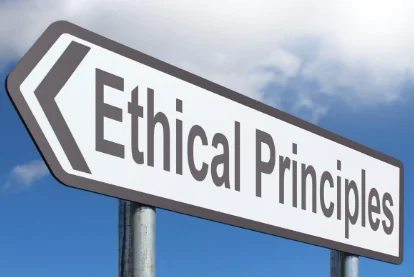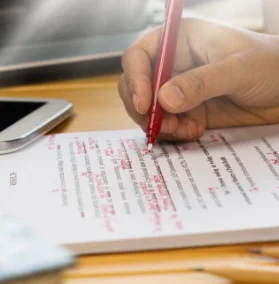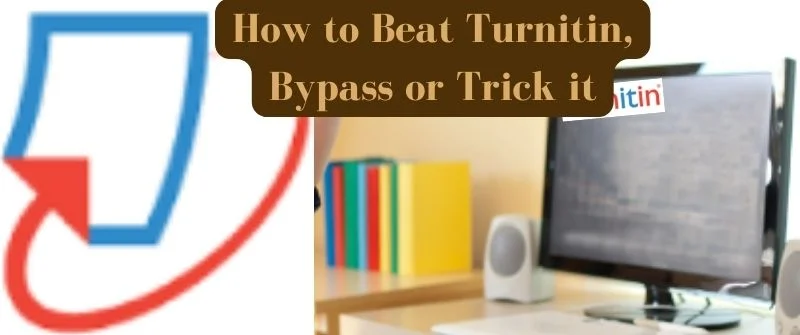Plagiarism detection systems like Turnitin are crucial to maintaining academic integrity in today’s educational environment. The reason behind this is that technology is revolutionizing how we learn and evaluate scholarly work.
However, the need to perform well academically led to a situation where some students might feel inclined to cheat on Turnitin. The motivations behind this desire come in reality when given an essay.
As such, the elements that push students to jeopardize their morality and look for immoral workarounds may likely emerge.
Reasons to Avoid Cheating
There are several reasons for students to adopt ethical habits and refrain from cheating. First off, cheating prevents growth both academically and personally.

Students lose out on the chance to develop critical thinking skills, problem-solving capabilities, and true comprehension of the subject matter when they use dishonest methods.
Second, cheating can have serious repercussions, including academic sanctions, reputational loss, and strained relationships with peers and teachers.
Thirdly, a student’s reputation and future possibilities may suffer in the long run due to cheating. Employers and educational institutions place a high value on integrity, and a history of academic dishonesty can harm future educational and professional opportunities.
The importance of real education and knowledge gain cannot be overstated.
Accepting challenges, making a sincere effort, and learning things the right way leads to intellectual growth, personal development, and a solid basis for future pursuits. Students should be progressive and honest and experience long-term success by upholding integrity and avoiding cheating.
Ways Students Use to Cheat Turnitin
Students have devised ways to cheat the Turnitin AI detection software. Here are the common five ways:
Copying and Pasting
Some students may copy and paste content directly from sources without proper citation or attribution, hoping Turnitin will not detect the similarities.
Rewording and Synonym Substitution
Students may attempt to evade detection by rewording or substituting synonyms within sentences or paragraphs while keeping the overall structure and ideas intact.
Using Plagiarized Essays
Students may search for pre-written essays or papers online and submit them as their own, hoping that Turnitin’s database does not contain those specific documents.
Article Spinning and Paraphrasing Tools
Automated tools that claim to rewrite content may generate paraphrased versions of existing sources, aiming to trick Turnitin into perceiving the work as original.
Contracting Ghostwriters
Some students may hire ghostwriters to create custom-written papers, intending to submit them as their original work.
Ethical Alternatives to Cheating Turnitin

Firstly, developing effective time management and study skills can alleviate the pressure of deadlines and allow students to allocate sufficient time for research, writing, and revisions.
Secondly, seeking help from professors, tutors, or writing centres enables students to clarify doubts, receive guidance, and enhance their writing proficiency.
Additionally, utilizing online resources and databases for research encourages thorough exploration of the topic while ensuring proper citation and referencing techniques are employed.
By acknowledging the work of others and citing sources accurately, students demonstrate intellectual honesty and give credit to the original authors. Embracing these ethical alternatives helps students avoid the severe consequences of academic dishonesty and nurtures a genuine passion for learning, self-improvement, and developing critical thinking skills.
Through these ethical practices, students can truly excel academically while upholding the principles of integrity and honesty.
Ways to Improve Originality and Avoid Cheating Turnitin
First, mastering the art of brainstorming enables them to generate unique ideas by exploring various perspectives, conducting in-depth research, and engaging in reflective thinking.
Secondly, developing effective paraphrasing and summarizing techniques empowers students to present information in their own words while maintaining the essence of the original content.
Furthermore, incorporating personal insights and critical thinking skills allows students to contribute their unique perspectives and analytical thoughts, thus adding value to their work.
Finally, using appropriate citation styles and adhering to formatting guidelines demonstrates respect for intellectual property and enables readers to verify the sources used.
Editing and Proofreading Techniques

To polish one’s work and ensure accuracy and clarity, editing and proofreading are essential steps. Students can improve their writing by using powerful approaches after realizing the importance of editing and revising.
A thorough proofreading entails examining grammatical, punctuation, spelling, and formatting issues closely. Utilizing grammar and plagiarism detection software also adds another level of confidence.
Getting input from peers or mentors can provide insightful viewpoints and point out areas where development is needed.
Students can improve the overall quality of their writing, clearly communicate their ideas, and show a dedication to excellence in written communication by embracing these strategies.
Managing Stress and Deadlines
The pressures of academic life can often lead to stress and the temptation to resort to last-minute submissions. To avoid the dangers of procrastination, students can implement various strategies for effective time management and prioritization.
Creating a study schedule that allocates dedicated time for assignments, projects, and exams helps structure their workload. Students can mitigate the stress of looming deadlines by sticking to their schedule and avoiding distractions.
Additionally, incorporating stress-relief techniques and self-care practices, such as exercise, mindfulness, and adequate rest, promotes a healthy mindset and boosts productivity.
Remember, by recognizing the importance of time management, prioritization, and self-care, students can navigate their academic responsibilities more efficiently, reduce stress levels, and maintain a balanced approach to their studies.
Understanding Assignment Guidelines
First and foremost, it is crucial to read and understand the assignment prompt properly. Students will clearly know what is anticipated if they pay close attention to the specifics, instructions, and any other related guidelines.
Second, asking teachers for clarification is crucial if you have any questions or concerns. Speaking with professors or teaching assistants can help you comprehend things better and avoid misconceptions.
Thirdly, reviewing the requirements and grading scale provides insightful advice. Students can match their work with the evaluation criteria and prioritize important elements by reviewing them.
Last but not least, it is essential to carefully evaluate the finished paper before submission to ensure it satisfies all requirements, including formatting, word count, and content expectations.
Students can demonstrate their understanding of the assignment requirements, satisfy academic standards, and increase their chances of getting good grades by carefully following these procedures.
Other Plagiarism Prevention Tools and Software

Grammarly, Copyscape, and Plagscan are a few other plagiarism detection software with varied features and functionalities for identifying possible plagiarism.
Using these tools, students may verify their own work before turning it in, allowing them to see any inadvertent parallels or incorrect citations and fix them. It is vital to understand plagiarism detection algorithms’ constraints and precision.
These technologies analyze submitted work against already published sources primarily using algorithms and databases; however, they might only catch some plagiarism incidents. For example, they could miss instances of paraphrasing or when the source isn’t listed in their database.
Therefore, even when a plagiarism detection tool finds no problems, students must think critically and use suitable citation techniques. Students can increase their adherence to ethical writing standards and ensure that their work is unique, correctly referenced, and plagiarized-free by using a mix of plagiarism detection technologies.
Conclusion
Cheating strangles intellectual and personal development, depriving kids of the chance to acquire genuine comprehension and critical thinking abilities. When found cheating, it could result in severe repercussions, harming one’s academic standing and future opportunities.
Adopting moral behaviour builds an integrity-based basis and promotes long-term success. Genuine learning and information acquisition are priceless because they offer a strong foundation for personal growth and open doors to worthwhile prospects.
Students demonstrate their dedication to integrity, self-improvement, and the pursuit of excellence by choosing honesty over dishonesty. Let’s uphold the ideals that foster real success while embracing the rules of academic honesty.
